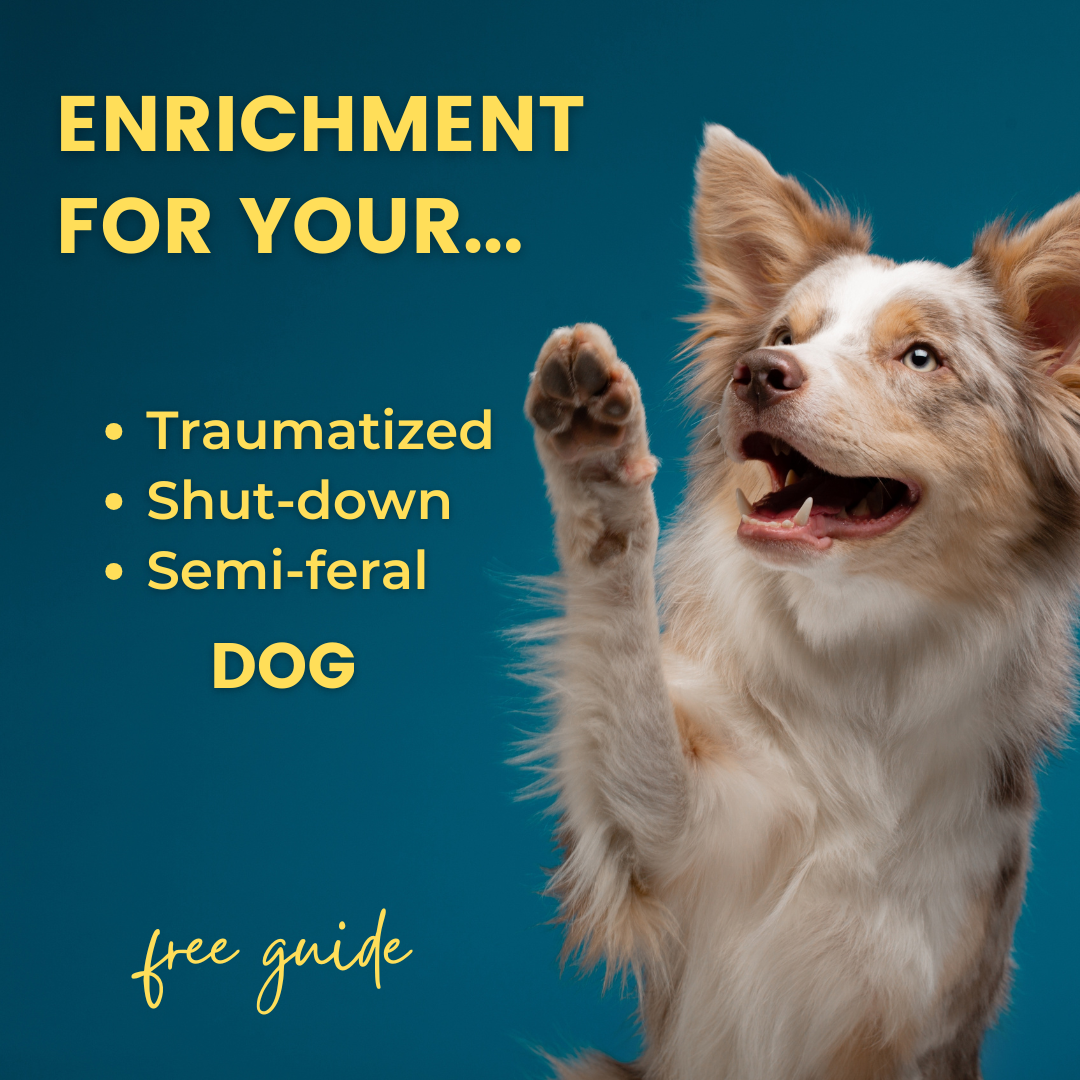Dental Health and Behavior: Why Dental Care Is So Important
Feb 04, 2025
When was the last time your dog had a dental cleaning? A proper one, with dental x-rays and anesthesia? Why is this so important? Read on...
In honor of February being Pet Dental Health month, I'm offering a couple of bonuses when you enroll in my online tooth brushing course, Healthy Smiles. You'll get a free guide to lower-stress dental visits for fearful dogs, AND have the opportunity to grab a discounted one-on-one session with me so you can get personalized live coaching on your toothbrushing training!
So, what could dental health possibly have to do with confidence building for fearful dogs? Well, it turns out, a lot. Dental disease can cause pain, infection, and even systemic complications... and none of that is good news for your dog's welfare or behavior.
How Does Pain Affect Behavior and Training?
While we don't want our dogs to be in pain in any situation, it can make our confidence-building efforts with our fearful dogs that much more difficult:
- Some things become more aversive: Even things that your dog normally finds no big deal- or that they even like- might become aversive to them when associated with pain. This can increase fearful or aggressive behaviors. As an example, my own dogs started fighting more often when both were in pain from separate health issues. The fighting stopped after the medical conditions were addressed.
- Reinforcers can become less valuable: Training is likely to be less effective if certain reinforcers, like treats, become less valuable to your dog. And when your dog is in pain, they probably won't find food quite as exciting. You might accidentally interpret this as "My dog just isn't food motivated," or "He's not interested in training," when in fact, your dog is actually in pain.
How Can You Tell If Your Dog Is In Pain?
Sometimes, it can be hard to tell if a dog is in pain. That's why regular (annual) sedated oral exams and dental x-rays are so important. Just last month, Pancake's vet found an infection and draining abscess waaaaaay back in the back of his mouth, associated with a tiny loose piece of bone. I had no way of seeing that myself. And to me he seemed to be behaving pretty normally- but I realized, after the issue had been treated, that he had actually been a little bit anxious and subdued.
There ARE lots of ways in which pain can affect animal behavior though, and often you will be able to detect one or more signs in your dog. Here are a few I turned up in a brief review of the literature. This list is far from exhaustive!
- Increased licking or scratching
- Increased or decreased activity
- Increased avoidance of hot or cold surfaces (OR, seeking out cold surfaces!)
- Increased avoidance of touching or handling
- Decreased interest in new social contact with other animals
- Increased duration and frequency of attack behavior towards unfamiliar animals
- Decreased time from seeing to attacking unfamiliar animals
- Increase risk of cognitive dysfunction in senior dogs
What Behavior Changes Are Linked to Dental Disease In Particular?
Here are some behavior changes that have been observed in animals experiencing oral pain. Again, this isn't an exhaustive list.
- No noticeable behavior change: Don't wait to see obvious problems before you ask your vet to examine your dog's teeth!
- No decrease in appetite: Many animals show no decrease in eating.
- Change in eating behaviors: Dropping food, chewing on only one side of the mouth, or decreased chewing are sometimes seen.
- Change in eating speed: Eating more slowly can indicate pain.
- Change in tolerance of touch: Avoiding handling, especially around the head, can be a sign of pain.
- Pawing at their mouth or excessive drooling is sometimes seen when dogs are experiencing acute oral pain.
- Activity/energy-level changes: Decreased overall activity is often a sign of pain.
- Decreased social and play behaviors is also common.
- Avoidance: Increased hiding behavior is often seen when animals are in pain.
- Decreased grooming behavior and somtimes resulting dirty, dull, or matted fur.
- Increased aggression toward people or other animals can also be linked to pain.
A few relevant citations are given in the video, if you're interested in learning more.
How Do I Prevent Dental Disease?
There are several approaches to improving your dog's dental health:
- At-home products: There are many dental chews, water additives, and dental diets are marketed to improve dental health. To learn which are backed by evidence, join us for our free webinar on dog dental products.
- At-home care: Toothbrushing is the MOST effective measure you can take at home to improve your dog's dental health.
- Proper cleanings by your veterinarian: Regular dental cleanings under anesthesia should be completed at least annually by your veterinarian.
I hope you enjoy this video about dental care and continue to view more of our content during Pet Dental Health Month.
Jump in to our Healthy Smiles self-paced toothbrushing class now to get special bonuses only available this month!



